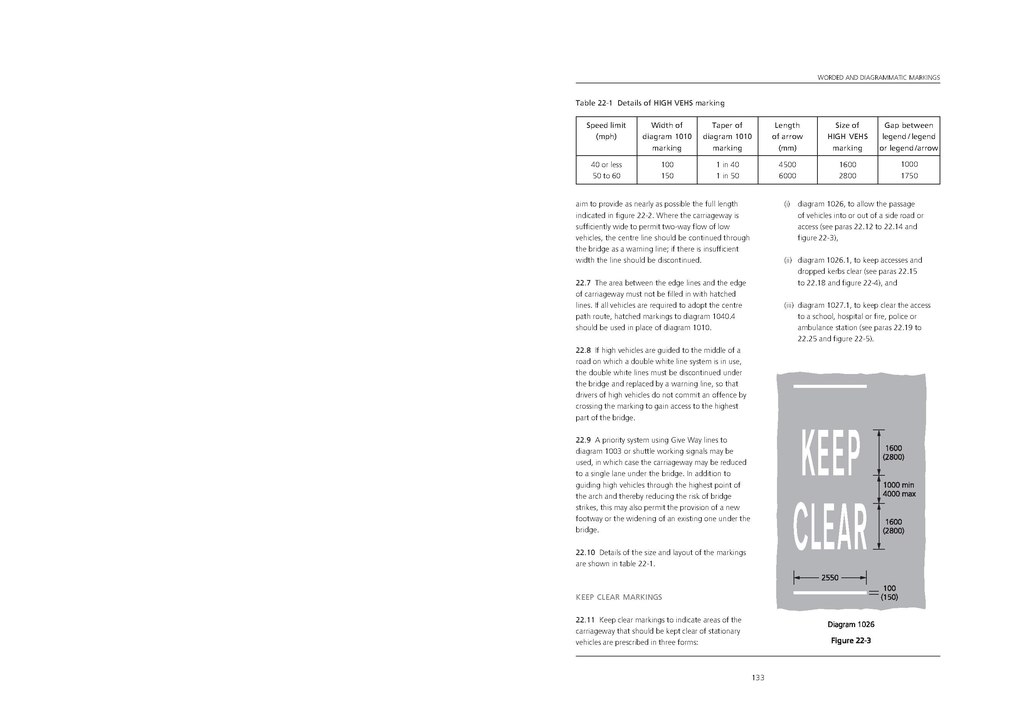aim to provide as nearly as possible the full length indicated in figure 22-2. Where the carriageway is sufficiently wide to permit two-way flow of low vehicles, the centre line should be continued through the bridge as a warning line; if there is insufficient width the line should be discontinued.
| Speed limit (mph) |
Width of diagram 1010 marking |
Taper of diagram 1010 marking |
Length of arrow (mm) |
Size of HIGH VEHS marking |
Gap between legend / legend or legend /arrow |
|---|---|---|---|---|---|
| 40 or less | 100 | 1 in 40 | 4500 | 1600 | 1000 |
| 50 to 60 | 150 | 1 in 50 | 6000 | 2800 | 1750 |
22.7 The area between the edge lines and the edge of carriageway must not be filled in with hatched lines. If all vehicles are required to adopt the centre path route, hatched markings to diagram 1040.4 should be used in place of diagram 1010.
22.8 If high vehicles are guided to the middle of a road on which a double white line system is in use, the double white lines must be discontinued under the bridge and replaced by a warning line, so that drivers of high vehicles do not commit an offence by crossing the marking to gain access to the highest part of the bridge.
22.9 A priority system using Give Way lines to diagram 1003 or shuttle working signals may be used, in which case the carriageway may be reduced to a single lane under the bridge. In addition to guiding high vehicles through the highest point of the arch and thereby reducing the risk of bridge strikes, this may also permit the provision of a new footway or the widening of an existing one under the bridge.
22.10 Details of the size and layout of the markings are shown in table 22-1.

KEEP CLEAR MARKINGS
22.11 Keep clear markings to indicate areas of the carriageway that should be kept clear of stationary vehicles are prescribed in three forms:
(i) diagram 1026, to allow the passage of vehicles into or out of a side road or access (see paras 22.12 to 22.14 and figure 22-3),
(ii) diagram 1026.1, to keep accesses and dropped kerbs clear (see paras 22.15 to 22.18 and figure 22-4), and
(iii) diagram 1027.1, to keep clear the access to a school, hospital or fire, police or ambulance station (see paras 22.19 to 22.25 and figure 22-5).
133
